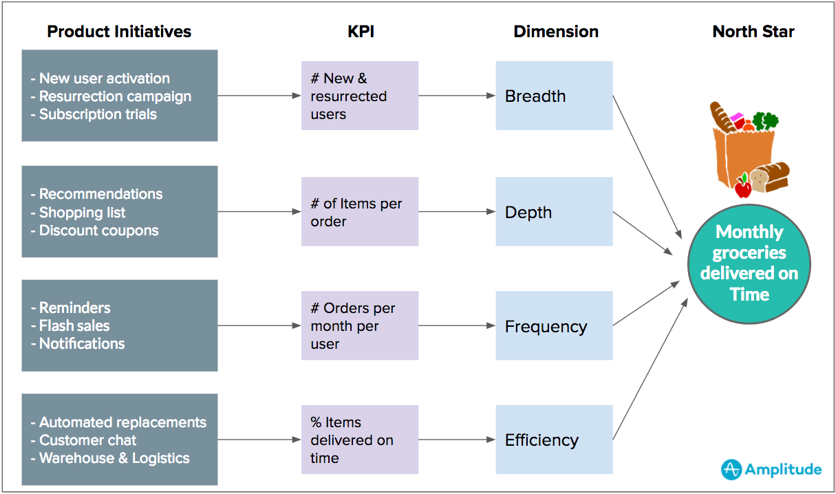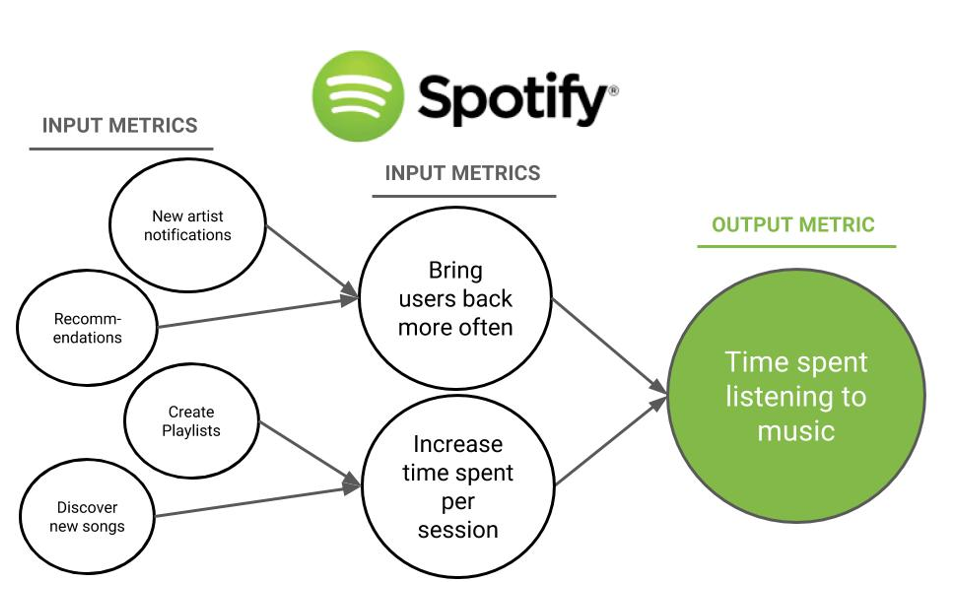We all know that when managing a project, one of the most important things to do is set the correct or ideal goals. Think about your life and your goals. What are they? What do you measure to define that you have succeeded? Some people will say money. Others will say happiness or liberty. Success is subjective to everyone. For a project, success can be sales, revenue, leads, and subscriptions, among others. To succeed, we must define goals that will lead us to greatness. CEOs, Marketers, or project managers must visualize what success is or looks like for a project so that goals can be set accordingly. Imagine a YouTube channel that uploads 15-minute videos weekly. The YouTuber’s goal is to live from that channel and has plans to expand with more channels. What is a metric that he can measure and define the success of the channel? I’d say minutes consumed by viewers. This metric can tell you the success of that channel if the minutes’ consumed increase. At the same time, the YouTuber keeps uploading videos, which means that more people are consuming his content or that people watching his content are being retained to watch more than one video. That means that more revenue will be driven over time. If the minutes decrease, the content might not appeal to the viewer, and revenue might stay flat or decrease. This metric tells you the overall success of the channel. Often, marketers called this metric the North Star Model or Framework.
The North Star model or framework is a model for managing a product by identifying a crucial metric that best captures the core value of what a product delivers to its customers. This indicator defines the relationship between the customer problems the product team is trying to solve and sustainable, long-term business results. In the model, there are key inputs that act collectively to produce this “main” metric. These can be between 3 to 5 influential factors that complement and affect the framework. For example, for the YouTube channel example, if the North Star Model Metric is minutes consumed, the inputs could be:
- Viewers/Views Per Week: See markets, completed views, etc.
- Channel subscriptions: where are they coming from, what video drives most of the subscription, etc.
- Engagement on the videos (Likes, Comments, shares)
- Minutes uploaded on the channel (video uploaded). The more videos uploaded, the more minutes can be consumed: when they are going to be uploaded, what the thumbnail is, and whether the ads are going to be pre-roll, mid-roll, or post-roll, etc.
My first job when I moved to Miami was managing three YouTube channels that stream Turkish, Korean, Chinese, Thai, and other international dramas dubbed in Spanish. When I started handling the channels, the main channel, MundoDrama, went from 200,000 subscribers to 1,000,000 subscribers, if I’m not mistaken. We did this by making the North Star approach inconveniently. We wanted to increase revenue from the channel, and we noticed that by uploading more, there was more to watch, so we started uploading TV shows with one and two hundred episodes, uploading two episodes daily. We started promoting it, interacting with the subscribers, and doing special events so the page could be shared to increase the volume. We did many optimizations to the different inputs, which helped us to increase awareness of the Hispanic culture, and month over month, we kept breaking records in revenue and views.
See the below example from a grocery store:

(image taken from Amplitude)
The image above shows a conceptual map of the North Star framework. The inputs on this framework are Dimension, KPI, and Product initiative. Each level can be optimized to improve or manipulate the North Star goal toward one direction. Another example is Spotify:

Image taken from GrowWithWard.com
The output metric in this example is referred to as the North Star metric. The North Star approach is similar to what I wrote in my last blog post regarding the digital ecosystem, where marketers build a roadmap based on different digital channels that will lead the customers into different touchpoints that are connected with the goal of a last touch point that can be a sale, subscription, call or any other conversion defined. Based on Mindwaven CEO Patrick Ewers, to determine the inputs, you could think of short-term tasks that will move you closer to the North Star goal. These inputs or factors have three defining characteristics which are:
1. An Action Item: In the YouTube example, I mentioned minutes uploaded (videos uploaded)
2. A yes or no format: Is the input working?
3. A completion date: Defined when the North Star goal should be achieved
While researching, I have found a couple of sources that provide different approaches to the North Star but with the same goal. The importance of building this is to be clear that the North Star goal defines what success will be for the project, product, or business growth. Most people try to do marketing for products, but their strategies are not well-defined and organized. Using the North Star will help you achieve goals for the success you or other marketers are looking for with their product or project. When designing the North Star Goal with its inputs, it’s essential to consider the customers’ behavior when consuming the product so the framework can be around how customers act during the buying decision process.







Leave a Reply